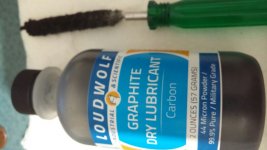rodell
Handloader
- Dec 23, 2013
- 268
- 0
I pulled out some loads from 2015 in 300 Weatherby to get ready for this year's Elk season. At sight in the velocity was quite a bit higher than my notes showed. I had loaded some new rounds using the same recipe and the velocity was 300 fps lower ... hmmm.
I pulled a couple of the bullets with a collet puller and they were really in there! A substantial difference in force from pulling "fresh" loads. Clearly the reason the velocity was up there. We're talking actually stressing the press to pull some of the bullets. I ended up pulling every cartridge and about half came out easily, and the others took considerable effort. The velocity difference for those I did shoot was clearly shown on the target, too.
These were Barnes TTSX's loaded in squeaky clean cases and I clearly need to start adding mica or graphite or something else to prevent welding if I'm going to keep loads handy. I haven't seen the phenomenon with other brands. I asked Barnes what the factory does to prevent this but got no answer.
Does anyone know what the factories use? Any ideas how to keep neck tension consistent while adding lube?
I pulled a couple of the bullets with a collet puller and they were really in there! A substantial difference in force from pulling "fresh" loads. Clearly the reason the velocity was up there. We're talking actually stressing the press to pull some of the bullets. I ended up pulling every cartridge and about half came out easily, and the others took considerable effort. The velocity difference for those I did shoot was clearly shown on the target, too.
These were Barnes TTSX's loaded in squeaky clean cases and I clearly need to start adding mica or graphite or something else to prevent welding if I'm going to keep loads handy. I haven't seen the phenomenon with other brands. I asked Barnes what the factory does to prevent this but got no answer.
Does anyone know what the factories use? Any ideas how to keep neck tension consistent while adding lube?






